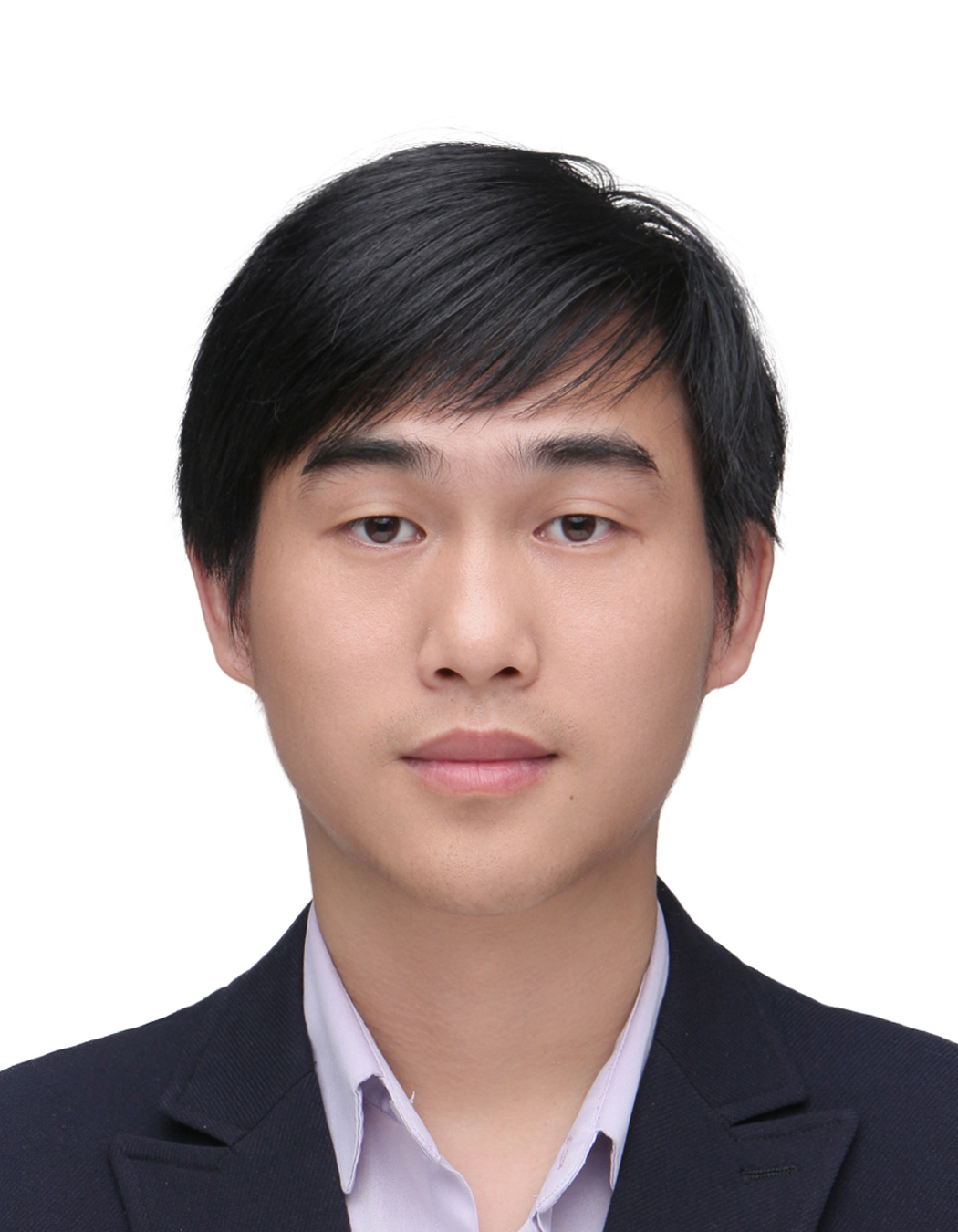 |
Zhi-Qin John Xu, и®ёеҝ—й’Ұ Professor, ж•ҷжҺҲ Institute of Natural Sciences, иҮӘ然科еӯҰз ”з©¶йҷў School of Mathematical Sciences, ж•°еӯҰ科еӯҰеӯҰйҷў Shanghai Jiao Tong University, дёҠжө·дәӨйҖҡеӨ§еӯҰ |
Zhi-Qin John Xu is a professor at the Institute of Natural Sciences/School of Mathematical Sciences, Shanghai Jiao Tong University. Zhi-Qin graduated from Zhiyuan College of Shanghai Jiao Tong University in 2012. In 2016, he graduated from Shanghai Jiao Tong University with a doctor's degree in applied mathematics. From 2016 to 2019, he was a postdoctoral fellow at NYU ABU Dhabi and the Courant Institute. From 2019 to 2025, he was an associate professor at Shanghai Jiao Tong University. For language model, he identifies the complexity of model is critical to the memorization and reason capbility of a language model. In deep learning theory, he and collaborators discovered frequency principle, parameter condensation and embedding principles in deep learning, and developed multi-scale neural networks; In AI for Science, mainly combustion, he and collaborators developed deep learning based mechanism reduction (DeePMR) and deep learning based surrogate model for accelerating the simulation of chemical kinetics (DeepCK). He published papers as the first author or corresponding author at TPAMI, JMLR, NeurIPSпјҢICML, ICLR, AAAIпјҢ SIMODS, CiCP, CSIAM Trans. Appl. Math., JCP, Combustion and Flame, Eur. J. Neurosci. etc. Currently, he is the Managing Editor of Journal of Machine Learning.
и®ёеҝ—й’ҰпјҢдёҠжө·дәӨйҖҡеӨ§еӯҰиҮӘ然科еӯҰз ”з©¶йҷў/ж•°еӯҰ科еӯҰеӯҰйҷўж•ҷжҺҲгҖӮдё»жҢҒеҹәйҮ‘委дјҳз§Җйқ’е№ҙйЎ№зӣ®гҖҒ科жҠҖйғЁйҮҚзӮ№з ”еҸ‘и®ЎеҲ’йқ’е№ҙ科еӯҰ家项зӣ®гҖҒйқўдёҠзӯүгҖӮ 2012е№ҙжң¬з§‘жҜ•дёҡдәҺдёҠжө·дәӨйҖҡеӨ§еӯҰиҮҙиҝңеӯҰйҷўгҖӮ2016е№ҙеҚҡеЈ«жҜ•дёҡдәҺдёҠжө·дәӨйҖҡеӨ§еӯҰпјҢиҺ·еә”з”Ёж•°еӯҰеҚҡеЈ«еӯҰдҪҚгҖӮ 2016е№ҙиҮі2019е№ҙпјҢеңЁзәҪзәҰеӨ§еӯҰйҳҝеёғжүҺжҜ”еҲҶж Ўе’ҢжҹҜжң—з ”з©¶жүҖеҒҡеҚҡеЈ«еҗҺгҖӮ 2019е№ҙиҮі2025е№ҙпјҢдёҠжө·дәӨйҖҡеӨ§еӯҰй•ҝиҒҳж•ҷиҪЁеүҜж•ҷжҺҲгҖӮ еңЁеӨ§жЁЎеһӢж–№йқўпјҢеҸ‘зҺ°еӨҚжқӮеәҰеҜ№еӨ§жЁЎеһӢи®°еҝҶе’ҢжҺЁзҗҶеҪұе“Қзҡ„жңәеҲ¶гҖӮ еңЁж·ұеәҰеӯҰд№ еҹәзЎҖз ”з©¶ж–№йқўпјҢдёҺеҗҲдҪңиҖ…е…ұеҗҢеҸ‘зҺ°ж·ұеәҰеӯҰд№ дёӯзҡ„йў‘зҺҮеҺҹеҲҷгҖҒеҸӮж•°еҮқиҒҡе’ҢиғҪйҮҸжҷҜи§ӮеөҢе…ҘеҺҹеҲҷпјҢеҸ‘еұ•еӨҡе°әеәҰзҘһз»ҸзҪ‘з»ңзӯүгҖӮ еңЁAI for ScienceпјҢдё»иҰҒжҳҜеңЁзҮғзғ§еҢ–еӯҰеҸҚеә”ж–№йқўпјҢдёҺеҗҲдҪңиҖ…е…ұеҗҢеҸ‘еұ•еҹәдәҺж·ұеәҰж·ұд№ зҡ„жңәзҗҶз®ҖеҢ–ж–№жі•е’ҢеҹәдәҺж·ұеәҰеӯҰд№ зҡ„жӣҝд»ЈжЁЎеһӢеҠ йҖҹзҮғзғ§жЁЎжӢҹгҖӮ д»Ҙ第дёҖдҪңиҖ…жҲ–иҖ…йҖҡи®ҜдҪңиҖ…иә«д»ҪеҸ‘иЎЁи®әж–ҮдәҺTPAMI, JMLRпјҢNeurIPSпјҢICMLпјҢICLR, AAAIпјҢSIMODSпјҢCiCPпјҢCSIAM Trans. Appl. Math.пјҢJCP, Combustion and FlameпјҢEur. J. Neurosci.зӯүеӯҰжңҜжңҹеҲҠе’Ңдјҡи®®гҖӮ зҺ°дёәJournal of Machine Learningзҡ„managing editorгҖӮ
Book (Chinese) in progress
Welcome to give any feedback!дёҖзӣҙеңЁжӣҙж–°пјҒ
гҖҠж·ұеәҰеӯҰд№ зҺ°иұЎеҜји®әгҖӢ и®ёеҝ—й’ҰгҖҒеј иҖҖе®ҮпјҢеҸӮдёҺеӯҰз”ҹпјҡзҺӢеҝ—дјҹпјҢ зҷҪеҝ—еЁҒпјҢ еј дј—жңӣпјҢжқӯиүҜж…ЁпјҢе‘Ёз« иҫ°пјҢиөөдҪіжқ°пјҢе§ҡдҝҠжқ°гҖӮдёӢиҪҪ第е…ӯзүҲ
иҝҷжң¬д№Ұд»ҘзҺ°иұЎй©ұеҠЁд»Ӣз»Қж·ұеәҰеӯҰд№ зҡ„дёҖдәӣеҹәжң¬зҹҘиҜҶпјҢд»ҘеҸҠжҸҗдҫӣзҗҶи§ЈгҖӮPPTе’ҢжӣҙеӨҡдҝЎжҒҜиҜ·и§Ғgithub
Youtube short lecture series: Phenomenon-driven understanding for deep learning
cover the following topics:
Introduction to Phenomenon-driven understanding
Low-frequency bias in output space during training (frequency principle/spectral bias)
Neurons in the same layer tend to be similar during training (neuron condensation/alignment)
Reasoning of transformer-based language models
Journal of Machine Learning
We launched a new journal: Journal of Machine Learning (JML). Welcome to submit papers to JML.
Editor-in-Chief: Prof. Weinan E, Prof. Jianfeng Lu
Scope: Journal of Machine Learning (JML) publishes high quality research papers in all areas of machine learning, including innovative algorithms of machine learning, theories of machine learning, important applications of machine learning in AI, natural sciences, social sciences, and engineering etc. The journal emphasizes a balanced coverage of both theory and practice. The journal is published in a timely fashion in electronic form.
WHY: Although the world is generally over-populated with journals, the field of machine learning (ML) is one exception. In mathematics, we just do not have a recognized venue (other than conference proceedings) for publishing our work on ML. In AI for Science, ideally, we would like to publish our work in leading scientific journals such as Physical Review Letters. However, this is a difficult task when we are at the stage of developing methodologies. Although there are many conferences in ML-related areas, publishing in journal form is still the preferred venue in many disciplines.
The objective for Journal of Machine Learning (JML) is to become a leading journal in all areas related to ML, including algorithms and theory for ML, as well as applications to science and AI. JML will start as a quarterly publication. Considering the fact that ML is a vast and fast-developing field, we will do our best to carry out a thorough and responsive review process. To this end, we will have a group of young and active managing editors who will handle the review process, and a large, interdisciplinary group of experienced board members who can offer quick opinions and suggest reviewers when needed.
Open access: Yes.
Fee: NO.
Sponsor: Center for Machine Learning Research, Peking University & AI for Science Institute, Beijing
Publisher: Global Science Press, but the editorial board owns the journal.
materials
A suggested notation for machine learning (йҖҡз”ЁжңәеҷЁеӯҰд№ з¬ҰеҸ·) published by BAAI (еҢ—дә¬жҷәжәҗ), see page in github or the page in BAAI
slides at 第дёҖеұҠжңәеҷЁеӯҰд№ дёҺ科еӯҰеә”з”ЁеӨ§дјҡ CSML2022.
slides at CSIAM 2020
Contact
Email: xuzhiqin at sjtu dot edu dot cn, Tel: 021-54742760
Office: 326, No.5 Science BuildingпјҢNo. 800 Dongchuan RoadпјҢ
Shanghai Jiao Tong UniversityпјҢMinhang District, Shanghai